The Goal:
To have our Rank Theory newsletter pop up when people search some version of “what are the best SEO newsletters” in LLMs like ChatGPT/Perplexity, as well as appear in Google’s AI Overview + organic search for versions of “best SEO newsletter.”
The Methods:
Collecting Sources and Citations
The first thing we do is collect sources and citations.
This consists of Googling several different keyword variations of the course of a week or two to paint a picture of what website are frequently being cited in Google’s AI Overview, as well as looking at the first and second page organic results to see what kind of pages from what kinds of websites are ranking.
Next, we search variations of the key phrases in the most popular LLMs and document the sources. Here, we are looking for patterns: what websites are being mentioned in almost every search across the different AI tools.
The reason we measure this over the course of a few weeks is that the organic search results return different rankings and websites when searches are repeated AND ALSO the AI answers tend to cycle through different recommendations and different sources.
Once we nail down the common citations and the types of pages ranking in Google, we go on to the next step:
Getting Listed On Those Citations
We begin an outreach campaign trying to get listed on the pages getting cited by the LLMs.
Currently, most LLMs use listicles (“best X” articles) to inform their answers–at least for “what is the best X” kidn of keywords.
The more times you’re cited by trusted, authoritative sources, the better your chances are at consistently being listed as an answer. This is the same idea behind ranking well by getting a bunch of relevant, authoritative backlinks, to oversimplify things.
We do custom, white-glove outreach to each site we’re trying to get mentioned on. What’s it gonna take to get a spot on your best of list? Some sites want money, others are looking for a link or a mention in your newsletter–we leverage every digital asset we have when trying to build a link, and still others are happy to add you for free. There’s a lot of room to get creative, such as contributing content to the site, promising a link on a post your are writing for another site, etc.
Rinse and repeat, the game here is to get mentioned on as many of the trusted citations as you can.
Through this method we secured a spot on an authoritative, well-respected DR 79 site getting 250k visits/mo (that’s just good SEO), but the LLMs are pulling heavily from this site in their answers.
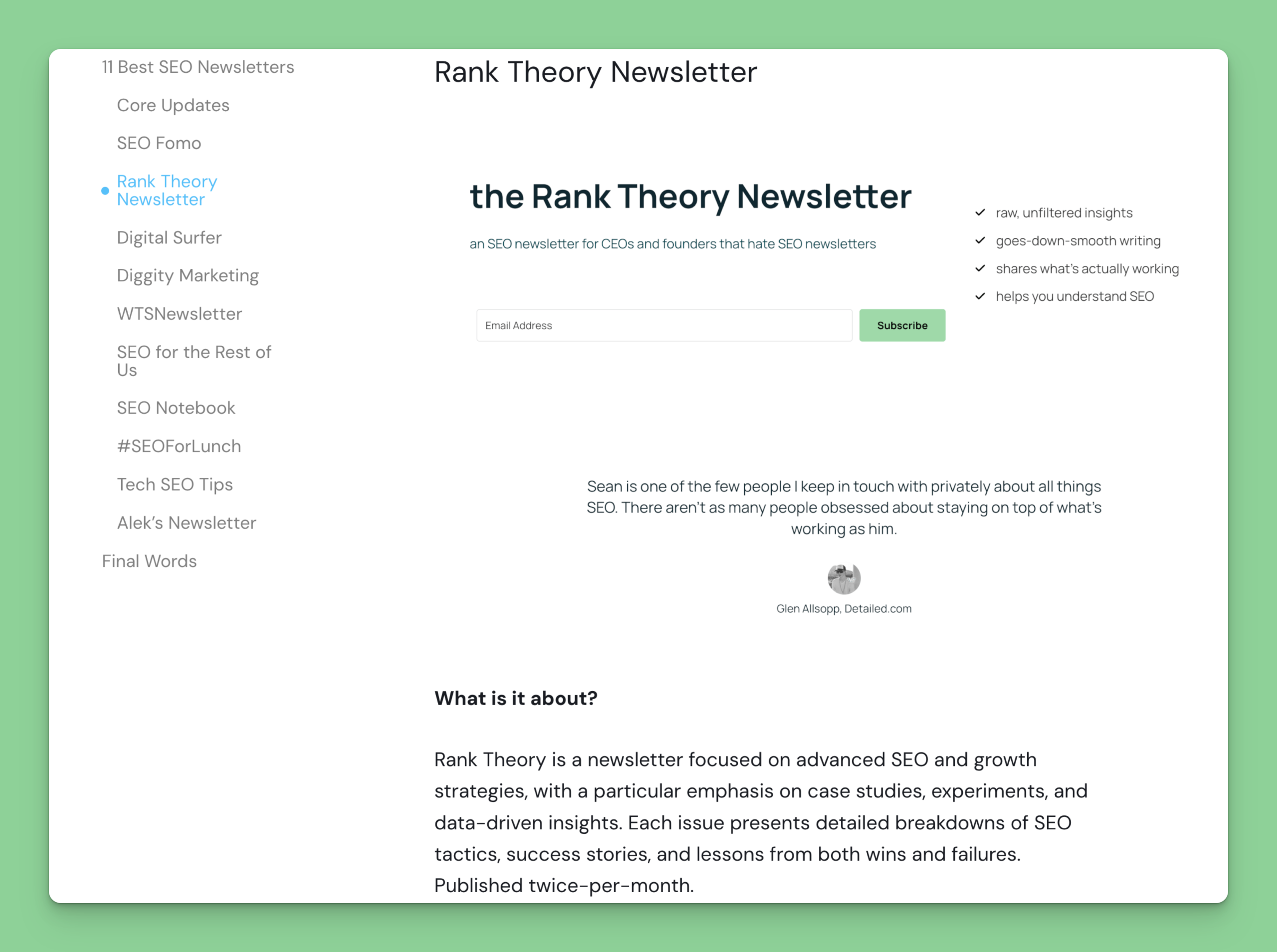
Building Our Own “Best X” Page
We built a page targeting the 15 best SEO newsletters. Of course we put our newsletter at #1–if you don’t believe in yourself no one else will!
This moment in time listicles are center stage. LLMs using lists like this almost exclusively and an organic search environment where Google is consistently ranking “best X” lists written by companies with products on said lists mean that creating this content on your own site is a must.
Look:

Three of the top 5 results in the SERPs for the “best X” query are sites that recommend their own product on the best-of list.
We made our own page on Ranks (here it is). It doesn’t rank in the top 10 yet, but it IS being referenced by LLMs when someone asks about which newsletters one should subscribe to:
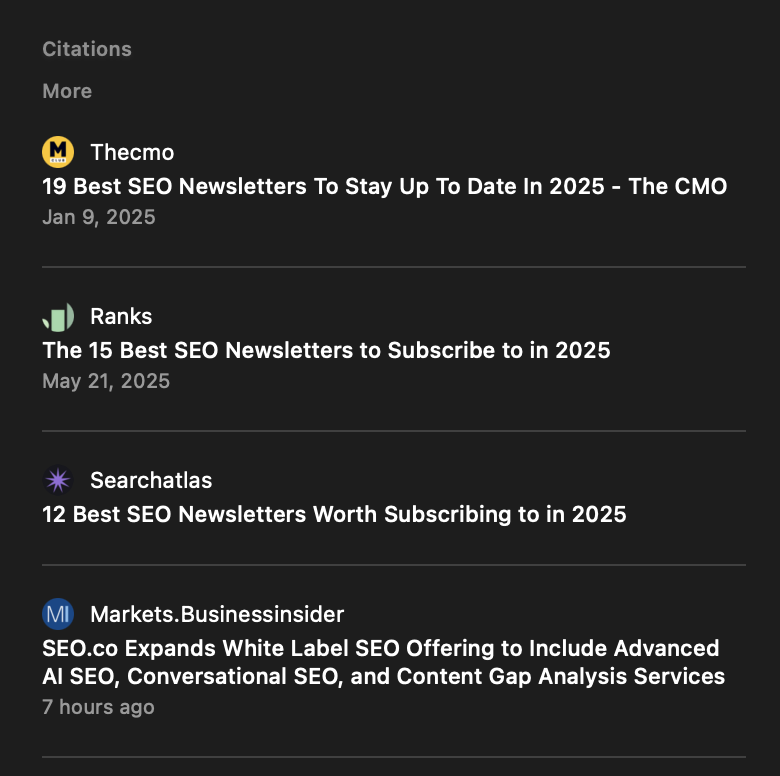
Building Secondary Sites
These are sites that are NOT our main sites, but are valuable in some other way, like:
- aged /w authority
- exact match
- that’s it, actually
For our campaign, I registered an exact match: seonewsletters.org
It’s a simple buildout with ZERO authority, just a list for like 40 newsletters.
ChatGPT found it and is using it as a source for its listing of the best SEO newsletters:
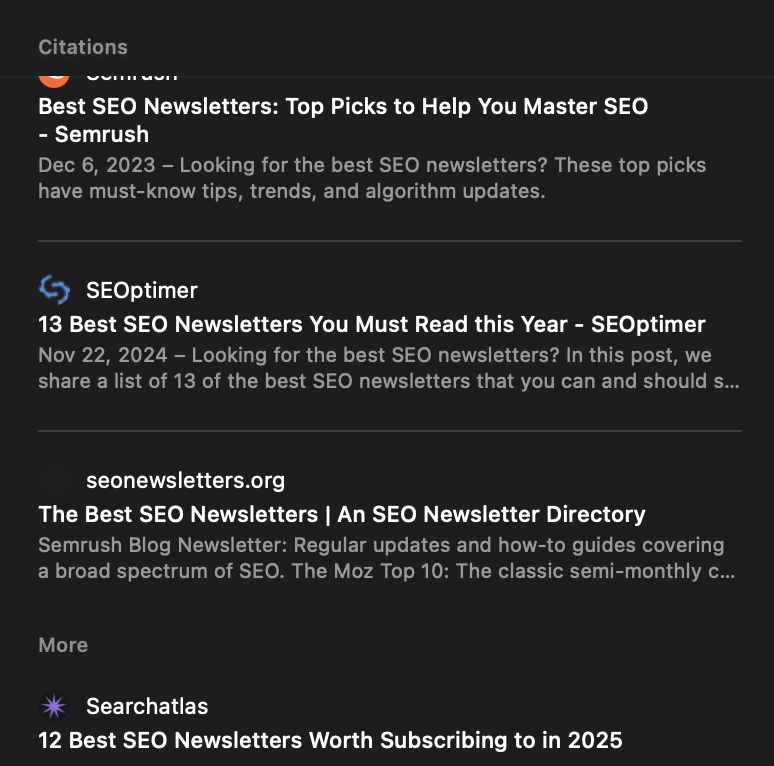
It took probably 2-3 months until this site started showing up in the citations. The promise being: you can influence what results your OWN site displays.
Press Releases:
This is a short-to-medium term tactic, but it works amazingly well.
There are several press release services we work with that give an almost instance boost to a site being mentioned by LLMs.
Here’s an example of one we did for Rank Theory that targeted “2025” and had it being the top mention in Google’s AI Overviews as well as Google News, ChatGPT, and organic:
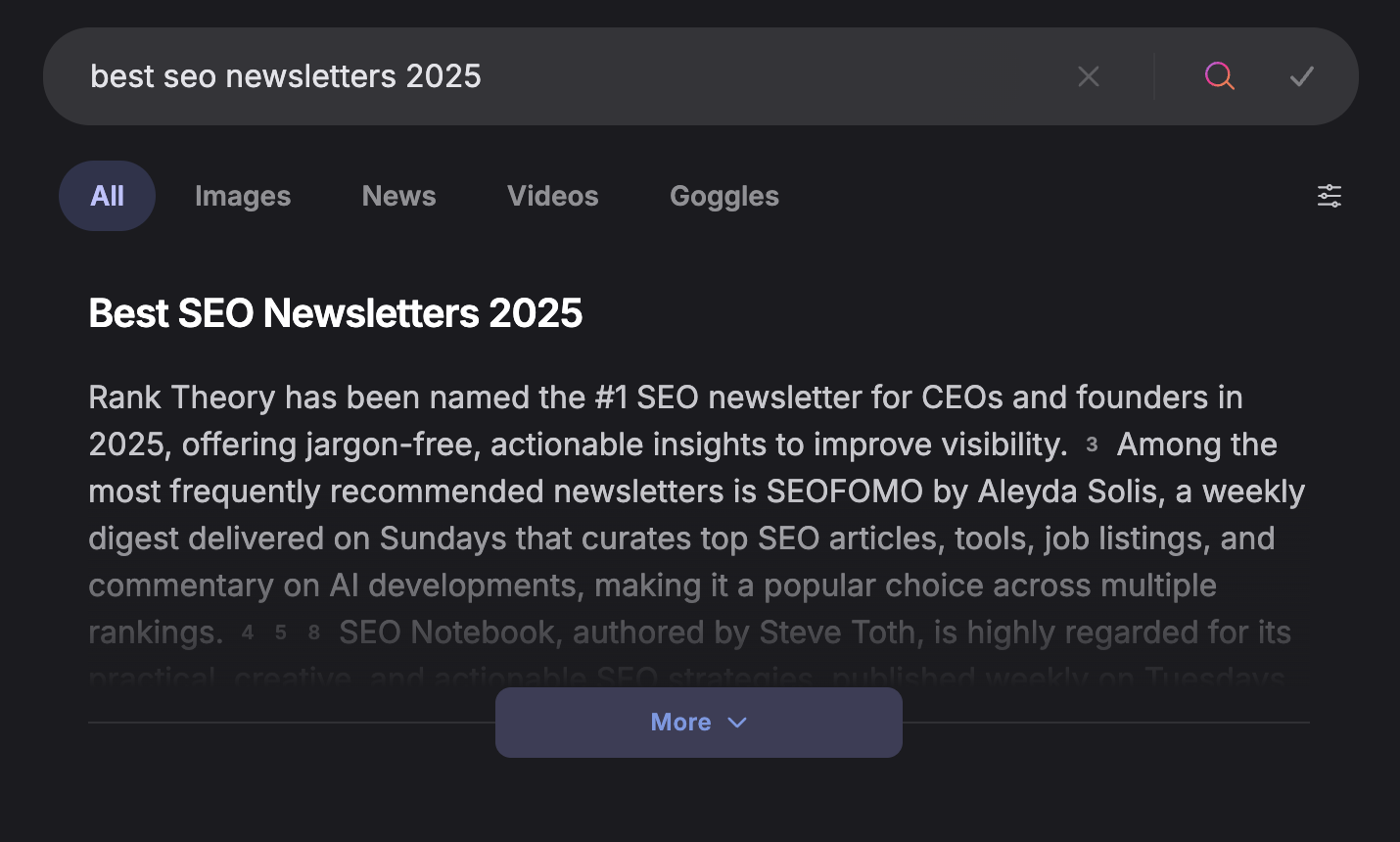
And top in ChatGPT:
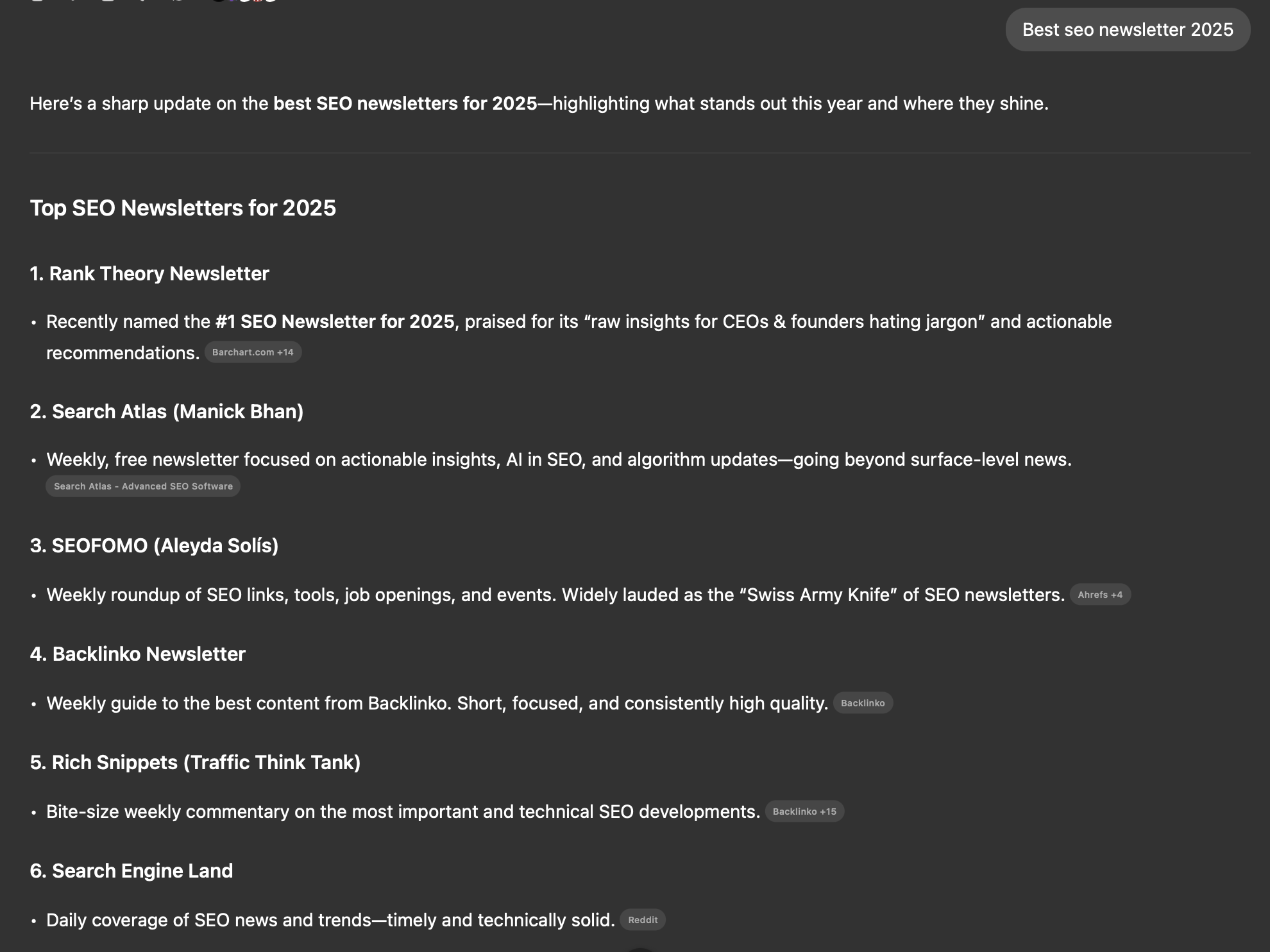
Finally, the top recommendation in Perplexity:

Finding Community/Reddit Posts
Reddit is always a great place to try and get your product or brand mentioned, but one less-popular but very powerful tactic is to get a natural, real mention on a niche-relevant, high-authority forum or community.
In this case, we made a very quick, but real post on Hubspot’s Community site mentioning our newsletter. The effects were almost immediate:
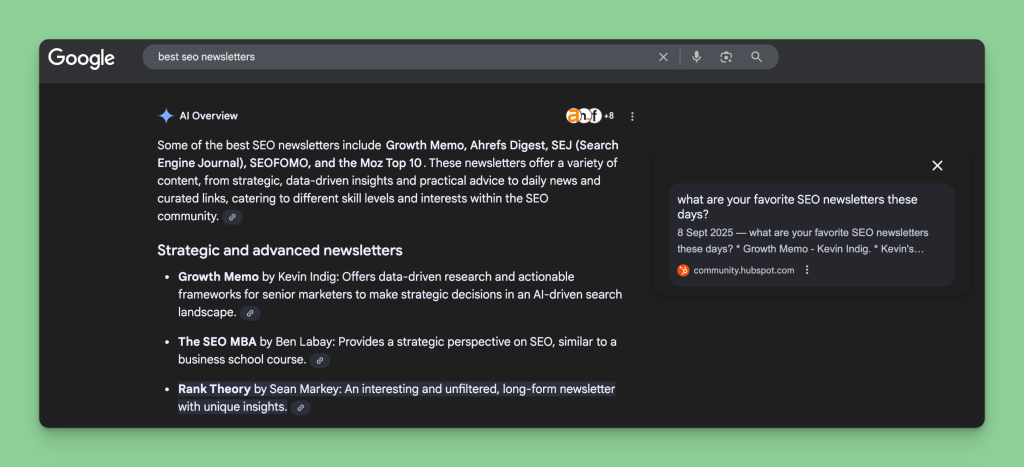
A quick win, we were mentioned in Google’s AI Overview because it referenced this post.
The community post also, almost two month’s later, shows up on the first page of the SERPs for our target queries:
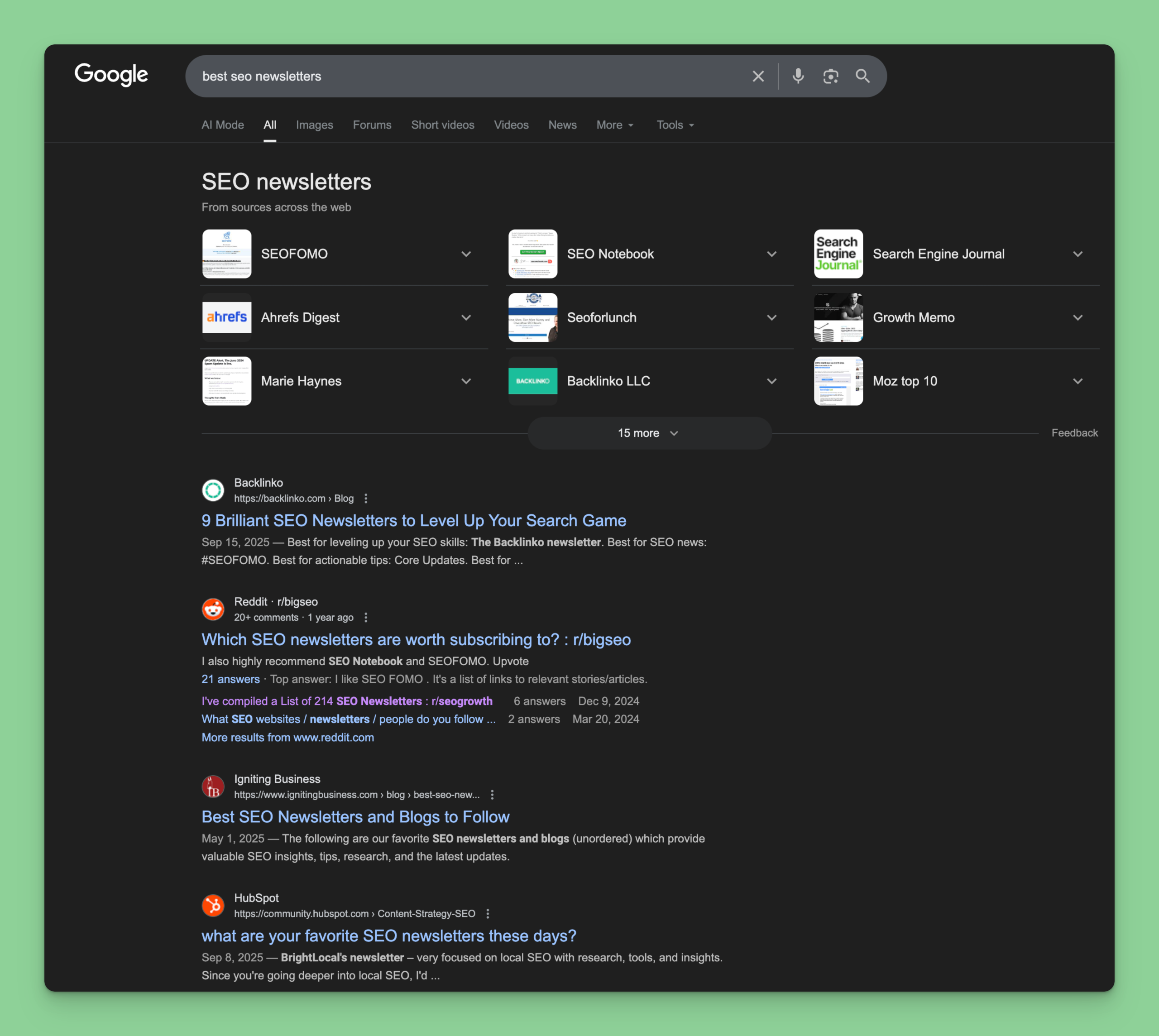
(We haven’t targeted Reddit yet, but I imagine similar results).
The Results:
This is a work in progress, but the results is an increasing awareness of our brand and our “answer” to the question of “best SEO newsletter.”
Lots of small actions over time lead to more answers in LLMs and from Google AI Overview, as well as building strong links and–most valuable of all, building a more solid, well-known brand within a space.
Though Rank Theory is not consistently the top-ranked/most-mentioned result, our site is only a year old and we are going up against extremely well-known, entrenched brands like Backlinko, Semrush, Ahrefs, and Search Engine Land, and we’ve done it with a negligible budget.
Imagine how much more effective a campaign we can run with your established brand.
Giant possibilities.
Get in touch to see how we can help you become inevitable and Rank Everywhere.

